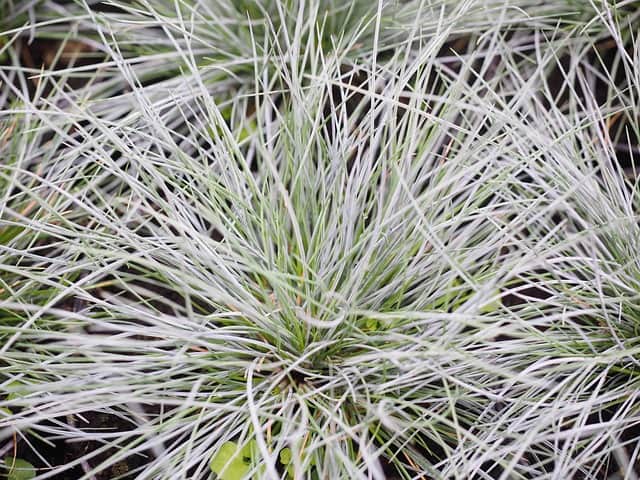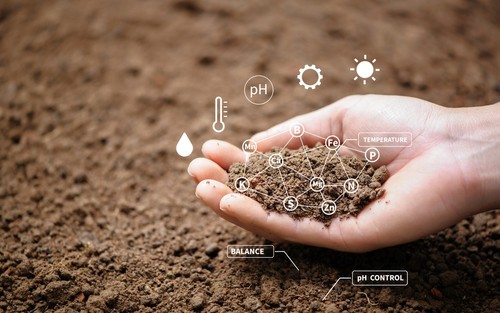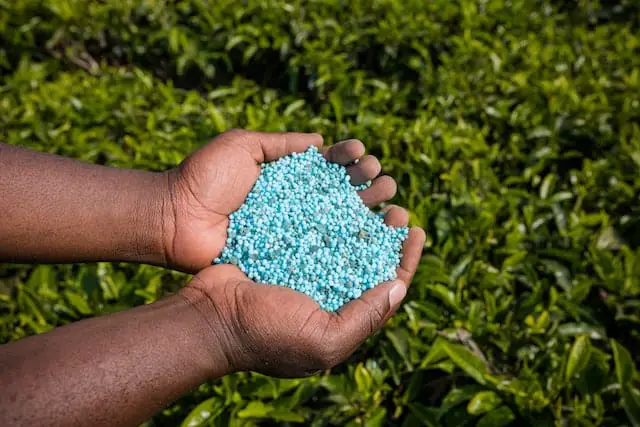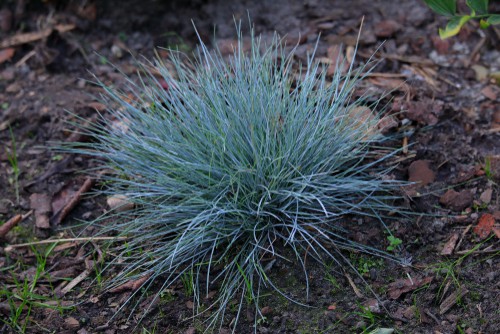Blue fescue grass is a popular ornamental grass that is known for its unique blue-green foliage. However, sometimes blue fescue grass turning brown can be concerning for gardeners who want to keep their lawn looking pristine.
There are a few reasons why blue fescue grass might turn brown, and understanding these reasons can help you keep your grass looking healthy and green.
One reason why blue fescue grass might turn brown is due to age. Like all grasses, individual bunches of blue fescue grass will live for a few years before dying off. As the plant ages, some leaves will naturally turn brown and die. However, if the entire plant is turning brown, there might be another issue at play.
Another reason why blue fescue grass might turn brown is due to environmental factors. For example, if the grass is not getting enough water, it might start to turn brown and dry out.
Additionally, if the grass is exposed to too much direct sunlight, it might also start to turn brown. Understanding the growing conditions for blue fescue grass can help you identify any environmental factors that might be causing your grass to turn brown.
Key Takeaways
- Blue fescue grass can turn brown due to age or environmental factors.
- Understanding the growing conditions for blue fescue grass can help you identify the cause of browning.
- Proper maintenance, including watering and fertilizing, can help keep blue fescue grass healthy and green.
Similar posts:
Understanding Blue Fescue Grass

Blue fescue grass, also known as Festuca glauca, is an ornamental grass that is prized for its silvery-blue foliage and fine texture. It is a cool-season grass that is native to Europe and Asia, and it is a member of the Poaceae family. Blue fescue is a true perennial, which means that it will come back year after year.
Blue fescue grass is a popular choice for gardeners who are looking for a low-maintenance ornamental grass that can add color and texture to their landscapes. It is drought tolerant and grows well in USDA plant hardiness zones 4 to 8. Blue fescue plants are often used as ground covers, edging plants, or in rock gardens.
One of the most popular varieties of blue fescue is ‘Elijah Blue’, which has a more intense blue color than other varieties. However, like all blue fescue grasses, ‘Elijah Blue’ can turn brown under certain conditions.
Blue fescue grass is a fast-growing plant that can reach a height of 6 to 12 inches. It has deep roots that allow it to reach ground water one or two feet down, which makes it a good choice for dry or sandy soils.
Blue fescue grass is a cool-season grass, which means that it grows best in the spring and fall when temperatures are cooler.
Overall, blue fescue grass is a great choice for gardeners who are looking for a low-maintenance, ornamental grass that can add color and texture to their landscapes. While it can turn brown under certain conditions, it is generally a hardy and reliable plant that can thrive in a variety of conditions.
Growing Conditions for Blue Fescue
1. Soil Requirements

Blue fescue grass prefers well-drained soil with a pH between 6.0 and 8.0. It can tolerate sandy soil, but it must be well-draining. If the soil is too heavy or poorly draining, it can lead to root rot and other problems.
It is essential to avoid overwatering or planting in areas with standing water, which can cause the roots to rot. If the soil is not well-drained, it is recommended to add sand or other organic matter to improve drainage.
2. Watering Needs
While blue fescue grass is drought-tolerant, it still requires some supplemental water during periods of dry weather. It is important to avoid overwatering, as this can lead to root rot and other problems.
Blue fescue grass prefers moist soil, so it is recommended to water deeply and infrequently to encourage deep root growth. It is best to water in the early morning or late afternoon to avoid evaporation and to prevent the grass from getting too wet during the hottest part of the day.
3. Temperature Tolerance
Blue fescue grass is a cool season grass that can tolerate cold, frost, and snow. It can also handle a degree of heat in the summer, but it is important to avoid planting in areas with excessive heat or humidity. In general, blue fescue grass prefers cooler temperatures and can struggle in hot and humid climates.
4. Sunlight Exposure
Blue fescue grass prefers full sun to partial shade. It can tolerate some shade, but it may not grow as vigorously or produce as much color. It is important to plant in an area that receives at least six hours of direct sunlight per day for best growth.
Blue Fescue Maintenance
Blue fescue grass is a low-maintenance, ornamental grass that is easy to grow and care for. However, like all plants, it requires proper maintenance to keep it looking its best. Here are some tips on how to maintain blue fescue grass.
1. Fertilization

Blue fescue grass is a slow-growing plant that does not require frequent fertilization. However, it can benefit from a slow-release fertilizer applied in early spring. Be sure to follow the manufacturer’s instructions and do not over-fertilize, as this can damage the plant.
2. Mowing and Pruning
Blue fescue grass does not require regular mowing, but it can benefit from occasional pruning to remove dead or damaged leaves. Use a sharp pair of shears and cut the leaves back to the base of the plant. This will encourage new growth and keep the plant looking neat and tidy.
3. Plant Division
Blue fescue grass can be divided every few years to keep it healthy and vigorous. Divide the plant in early spring or late summer, using a sharp spade to cut through the root ball. Replant the divided sections in well-drained soil and water thoroughly.
In addition to these maintenance tasks, it is important to provide proper watering and well-drained soil for blue fescue grass. Avoid over-watering or allowing the plant to sit in soggy conditions, as this can lead to root rot and other problems.
Blue fescue grass is drought-tolerant, but it may benefit from supplemental water during periods of drought.
Finally, be sure to keep an eye out for pests and diseases that can affect blue fescue grass. Aphids, fungus, and brown patch disease can all cause problems for this plant. Use insecticidal soap or horticultural oil to control pests, and remove any brown patches promptly to prevent the spread of disease.
Overall, blue fescue grass is a beautiful and easy-to-grow plant that can add texture and color to any landscape. With proper maintenance and care, it can thrive in a variety of climates and hardiness zones.
Blue Fescue Grass Turning Brown – 3 Common Problems
Blue fescue grass is a hardy and low-maintenance plant that can tolerate a range of growing conditions. However, like all plants, it can experience problems that cause it to turn brown or die. Here are some common problems and solutions for blue fescue grass.
1. Brown Patches and Diseases
Brown patches on blue fescue grass can be caused by a variety of factors, including brown patch disease, which is caused by the Rhizoctonia fungi. This disease thrives in hot and humid weather conditions and can cause large brown patches to appear on the grass.
To prevent brown patch disease, it is important to maintain proper lawn care practices, such as mowing the grass to the correct height and watering it deeply and infrequently. In severe cases, fungicides may be required to control the disease.
2. Pest Infestations

Blue fescue grass can be susceptible to pest infestations, such as aphids. These tiny insects feed on the sap of the grass, causing it to turn brown and die.
To control aphids, insecticidal soap or horticultural oil can be applied to the grass. Additionally, it is important to maintain a healthy lawn by fertilizing it properly and watering it deeply and infrequently.
3. Over-Watering and Over-Fertilizing Issues
Over-watering and over-fertilizing can also cause blue fescue grass to turn brown and die. When the grass is over-watered, it can develop root rot, which can cause the grass to wilt and turn brown.
To prevent over-watering, it is important to water the grass deeply and infrequently, allowing the soil to dry out between waterings. Over-fertilizing can cause fertilizer burn, which can cause the grass to turn brown and die.
To prevent fertilizer burn, it is important to follow the manufacturer’s instructions when applying fertilizer and to avoid applying too much fertilizer at once.
Frequently Asked Questions
What are some common reasons for blue fescue grass to turn brown?
There are several common reasons why blue fescue grass may turn brown. One reason is overwatering, which can lead to root rot and cause the grass to turn brown.
Another reason is under-watering, which can cause the grass to dry out and turn brown. Other common reasons include poor soil quality, lack of sunlight, and pests or diseases.
What is the best way to care for blue fescue grass to prevent browning?
The best way to care for blue fescue grass is to ensure that it receives the proper amount of water and sunlight. It is also important to use well-draining soil and to avoid over-fertilizing. Pruning and maintenance should be done regularly to keep the grass healthy and prevent browning.
Can overwatering cause blue fescue grass to turn brown?
Yes, overwatering can cause blue fescue grass to turn brown. Overwatering can lead to root rot, which can cause the grass to turn brown and die. It is important to water blue fescue grass only when the soil is dry to the touch.
Is it normal for blue fescue grass to turn brown during certain seasons?
Yes, it is normal for blue fescue grass to turn brown during certain seasons. Blue fescue grass is a cool-season grass, which means that it may turn brown during hot summer months. However, if the grass remains brown during the cooler months, it may be a sign of a more serious issue.
What are some signs that my blue fescue grass needs pruning or maintenance?
Some signs that blue fescue grass needs pruning or maintenance include yellowing or browning leaves, dead or brown patches, and overgrown or uneven growth. Pruning and maintenance should be done regularly to keep the grass healthy and prevent browning.
Are there any pests or diseases that can cause blue fescue grass to turn brown?
Yes, there are pests and diseases that can cause blue fescue grass to turn brown. Some common pests include aphids and spider mites, while common diseases include leaf spot and rust. Proper care and maintenance can help prevent these issues.

Hey, I’m Lisa and I’ve been an avid gardener for over 30 years. I love writing, talking and living in the garden! Feel free to connect with me on my socials below

